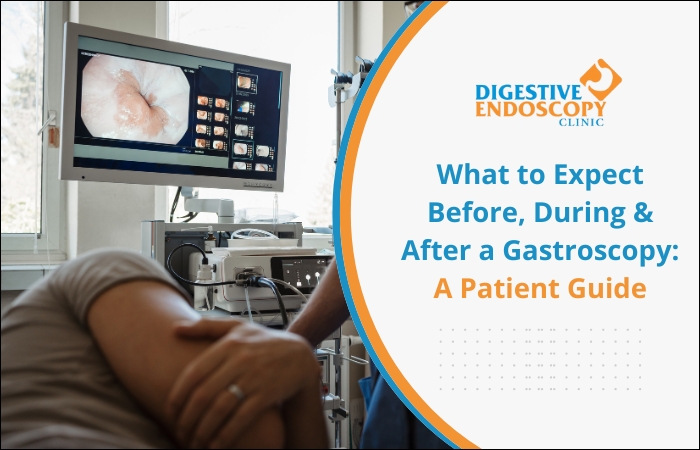
What to Expect Before, During & After a Gastroscopy
The word “gastroscopy” can sound intimidating, and it’s completely normal to feel a little nervous if your doctor has recommended one. However, understanding the process is the first step toward feeling calm and prepared. A gastroscopy (or upper endoscopy) is a common, safe procedure that allows a doctor to examine the lining of your upper digestive system.
Before Your Gastroscopy: Preparation is Key
The success of your gastroscopy begins with proper preparation. Your doctor will provide specific instructions, but general guidelines include:
-
Fasting: You will be asked to avoid all food and solid drinks for 6-8 hours before the procedure. This is crucial to ensure your stomach is empty, giving the doctor a clear view and minimizing the risk of complications. You may be allowed small sips of water up to 2-3 hours beforehand.
-
Medication Review: Inform your doctor about all medications you are taking, especially blood thinners or diabetes medicines. They will advise you on whether to continue or temporarily pause them.
-
Arrange Transportation: As you will receive a sedative, you will not be allowed to drive, operate machinery, or make important decisions for the rest of the day. Arrange for a friend or family member to drive you home.
During the Procedure: Quick and Comfortable
The entire procedure typically takes only 10 to 20 minutes. Here’s what happens:
-
In the Procedure Room: You’ll be made comfortable on a bed, lying on your left side. A nurse will monitor your vital signs.
-
Sedation: You will likely receive a mild sedative through an IV in your hand or arm. This is not a general anesthetic; it’s designed to make you feel relaxed and drowsy. Many patients sleep through the entire thing.
-
The Examination: The doctor will gently insert the endoscope—a thin, flexible tube with a light and camera—through your mouth and down into your esophagus, stomach, and the first part of your small intestine (duodenum). You will be able to breathe normally throughout.
-
What You Might Feel: The most common sensation is a feeling of slight pressure, but not pain. The sedation ensures you are comfortable. The doctor may take small tissue samples (biopsies) for further testing, which is completely painless.
After the Gastroscopy: Recovery and Results
After the procedure, you will be moved to a recovery area to rest while the sedation wears off. This can take about 30-60 minutes.
-
Immediate After-Effects: It’s normal to have a mildly sore throat or feel a bit bloated from the air used to inflate your stomach during the exam. These sensations pass quickly.
-
Going Home: Once you are alert, your doctor will discuss the initial findings with you. If biopsies were taken, those results can take a few days to a week. You will be discharged with a set of post-procedure instructions.
-
Resuming Activities: You can usually eat and drink normally a few hours after the test, starting with light meals. It’s advised to take the rest of the day off to rest.
Expert Care at Digestive Endoscopy Clinic
For those seeking a gastroscopy test in Rasta Peth, Pune, Consult Dr. Suresh Jain at Digestive Endoscopy Clinic.
Frequently Asked Questions (FAQs)
1. Is a gastroscopy painful?
No, thanks to the sedative, most patients experience no pain and often do not remember the procedure. You might feel minor discomfort like a sore throat afterward.
2. How long does a gastroscopy take?
The actual examination is very quick, typically lasting between 10 to 20 minutes.
3. Why would I need a gastroscopy?
It is used to investigate symptoms like persistent heartburn, difficulty swallowing, stomach pain, nausea, vomiting, or bleeding to diagnose conditions like ulcers, gastritis, or celiac disease.
4. Are you put to sleep for a gastroscopy?
You are not put under full general anesthesia. Instead, you receive conscious sedation, which makes you very drowsy and relaxed, often causing you to sleep through it.
5. Can I drive home after a gastroscopy?
No. The sedative impairs your reflexes and judgment. You must have someone drive you home and are advised not to drive for the rest of the day.
